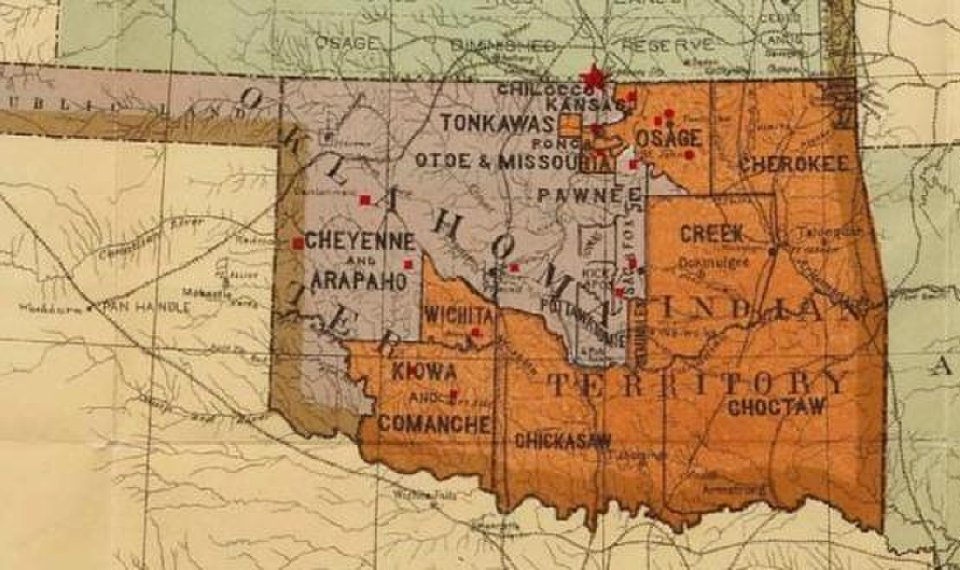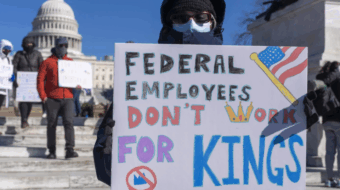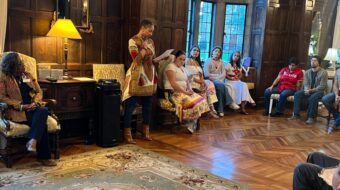
On Thursday, July 9, the U.S. Supreme Court fulfilled its legal duty and moral obligation and returned three million acres of eastern Oklahoma to the Muscogee Creek Nation (MCN). This is the area comprised of the original boundaries of the Nation under the Treaty of 1866. This is a gigantic legal step forward for Indigenous people not just in Oklahoma but nationwide.
The decision rendered in the case of McGirt v. Oklahoma is the most momentous Indian law ruling in recent American history. It is earthshaking; a decision that has been awaited for over 100 years. The statehood of Oklahoma in 1907 dashed the dreams and aspirations of generations of Indigenous on the unrelenting rocks of racism when the state was admitted to the Union with the dismantling of the governments of the Five Southern Tribal Nations: Muscogee Creek, Cherokee, Choctaw, Chickasaw, and Seminole.
Moreover, thousands upon thousands of tribal members were impoverished and African Americans living in the tribal areas were subjected to the horrendous system of Southern racist discrimination that was imposed with Oklahoma statehood. All were aware of the meaning of Euro-American state administration. Indeed, the barbaric Tulsa race riot of 1921 can be understood as a consequence of that statehood.
The substance of the case focused on the question of what government has sovereignty—the state of Oklahoma or the federal government—over serious criminal matters in the area of eastern Oklahoma. Jimcy McGirt, a Seminole man, was convicted of sex crimes by the state of Oklahoma, but in his appeal, McGirt’s lawyers claimed that because past Muscogee treaty rights had never been disestablished by Congress, only the federal government could try his case. The state of Oklahoma argued that Muscogee sovereignty had been effectively extinguished in practice if not in legislation.
In cases involving tribal citizens, the Supreme Court definitively stated that those treaty rights remain in force, giving the federal government authority over prosecuting serious crimes on reservation land, of which eastern Oklahoma is a part. The ruling will have effects far beyond the criminal justice system, however. It may also have collateral legal implications for taxation, business and property law, and municipal regulations, and it could change the long-exercised allocation of authority. In reference to those and other outcomes, it can only be surmised that they will be largely determined by negotiations between the Five Nations and state and federal authorities.
Background to the case
This case, McGirt v. Oklahoma, was an appeal from a state court conviction and was the Supreme Court’s second attempt to attempt to adjudicate the status of tribal lands in eastern Oklahoma. The first attempt to resolve this issue was in the case of Sharp v. Murphy. Patrick Murphy, a Creek citizen, was tried for a murder committed in McIntosh County, east of Oklahoma City, and was convicted in state court.
After Murphy was sentenced to death, it was found that the murder he’d been convicted of was committed on land that had been an Indian allotment. Also, Murphy went further, arguing that even if the crime did not occur on allotment land, it still took place in Indian Country because it was committed within the historic boundaries of the MCN reservation which still existed. The case went to the 10th Circuit, and the verdict was for Murphy. The state of Oklahoma appealed the case to the Supreme Court. Subsequently, the Court could not reach a decision in Murphy, hopelessly deadlocked 4-4, due to Justice Gorsuch recusing himself because he was on the 10th Circuit when Murphy was heard.
This brought in the McGirt case, involving the same Indian law issues, as McGirt is a member of the Seminole Nation and the crimes for which he was convicted were also committed within the historic boundaries of the MCN. This time the matter was heard by the full nine-member court.
As for Murphy, on the same day as the McGirt decision, the Court issued a one-sentence unsigned opinion ruling in favor of still-incarcerated Patrick Murphy. The ruling was reached “for the same reasons stated in McGirt.” Both Murphy and McGirt are now expected to be retried of the charges against them in federal court.
Sovereignty never relinquished
This was a 5-to-4 decision by the Court, with Justice Neil M. Gorsuch writing for the majority. Gorsuch is a conservative justice who, despite his political leanings, is known for siding with Native nations in previous cases and is considered as having vast Indian law experience and knowledge. He said that Congress had reserved for the Muscogee Creek Nation a reservation and that the United States was bound to keep its promise. This was to compensate the Nation for land from which it was driven in the Southeast in the 1830s.
“Because Congress has not said otherwise, we hold the government to its word,” Gorsuch wrote. Some legal analysts have contended that Justice Gorsuch did not unduly favor the Indigenous nations, but simply adhered to the law and the language of the treaties as he has done in other Indian law cases. Gorsuch simply affirmed that the treaties with tribal nations are the “law of the land.”
Justice Clarence Thomas, also known as a conservative jurist, dissented from the majority decision. This came as a bit of a surprise because over the years Thomas has expressed serious doubts of U.S. plenary power (which is claimed by Congress as its basis in the breaking of treaties) over U.S. Indigenous nations.
In disagreeing with this authority, Thomas wrote in United States v. Lara: “I cannot agree that the Indian Commerce Clause provides Congress with plenary power to legislate in the field of Indian affairs. At one time, the implausibility of this assertion troubled the Court, and I would be willing to revisit the question.”
A period of Indigenous advances
This ruling comes at a very historic time for the Indigenous of the U.S. Notwithstanding the coronavirus ravaging tribal communities, government machinations to withhold funds to fight the disease, and the economic travail brought by the concomitant closings of Native casinos, the movement for liberation and forward progress has received new impetus.
In the past weeks, the struggles sparked by the police murder of African-American brother George Floyd morphed into a worldwide maelstrom of protest against racism. They’ve focused renewed energy on nationally and racially oppressed peoples in the U.S., with fresh attention given to the centuries-long fight of tribal nations led by Native activists over long-suppressed treaty rights and stolen land.
From Indigenous protesters and tribal peoples bringing international focus to their plight by blocking roads leading to Mount Rushmore to denounce Trump’s July 3rd visit to sacred land, to the Court victory over the Dakota Access Pipeline ordering its shutdown pending a complete environmental review, and to unprecedented pressure by corporate sponsors on the Washington Redskins to change the name and logo of that sports team, there has been a veritable juggernaut of ferment exploding across Indian Country and beyond.
Waiting for justice for over a century
In the Oklahoma situation specifically, this ruling has, for the moment, brought a semblance of justice that the Indigenous have been waiting on for over 100 years. The background of this monumental struggle can be traced in part to the post-Civil War treaties of 1866.
Because all of the Five Southern Tribal nations participated in the war, all were required to sign new treaties setting new reservation boundaries. The Muskogee Creek Nation, under its treaty, was composed of three million acres in eastern Oklahoma, including most of the city of present-day Tulsa (the city of Tulsa was originally founded as a Muscogee Creek town). The reservation lands of the other four tribal nations comprised 16 million acres.
In perhaps its most flagrant violation of sacred treaties with the United States, the American government in 1898 enacted the Curtis Act, which mandated that by March 1906 all tribal governing bodies, meaning, of course, all tribal governments and tribal courts, had to be abolished. The tribal nations and their reservations were “legally” dissolved and disestablished in blatant disregard of the treaties that were the “law of the land.”
But this was not the end of the narrative as determined by federal Indian law. Under a longstanding legal precedent, an Indian reservation cannot be disestablished without compelling statutory evidence of Congressional intent to dismantle a given reservation. Further, under federal law 18 U.S.C. Sec. 1151(a), any serious crime committed by or against a citizen of a Native American nation within a tribe’s reservation or on an Indian allotment is under the jurisdiction of the federal government, as mentioned earlier. These blocks of land are defined as “Indian Country.”
Although the McGirt case applies specifically to the MCN, the Court’s ruling would also apply to the Cherokee, Choctaw, Chickasaw, and Seminole Nations, as all of the tribal nations have similar histories with the state of Oklahoma. In fact, this ruling will go even further and have tremendous impact nationally affecting other Indigenous nations and lands across the entire United States.
Legal pundits have said that other Native people held in Oklahoma prisons under state convictions for crimes committed on eastern Oklahoma reservation land will now have the right to request federal review of their cases.
As for the further ramifications of the decisions, Oklahoma Attorney General Mike Hunter said the state and the Muscogee Creek, Cherokee, Choctaw, Chickasaw, and Seminole Nations were laboring on an agreement to present to Congress and the U.S. Department of Justice to address the jurisdictional matters arising from the decisions. (It must be noted that the Trump administration sided with the state of Oklahoma in opposing the return of eastern Oklahoma to reservation status.) Presently, many feel that it is a little early to attempt to pinpoint what so much of the results will be beyond the paramount issue of criminal jurisdiction.
Oklahoma history should be taken into account and the decades that the five nations were, because of systemic racism, massively deprived of their land and resources for generations, beginning most flagrantly with Oklahoma statehood in 1907. Renowned Oklahoma historian Angie Debo in her anguished and wrenching book, And Still the Waters Run, detailed how, in particular after statehood, Native Americans in eastern Oklahoma were ruthlessly swindled out of what remained of their tribal lands by the white administration through the allotment policy. This method of allotment was designed to break up the reservations by compelling tribal families to accept plots of 160 acres of the tribal domain with the surplus going to white settlers.
Historian Ellen Fitzpatrick said of Debo’s book, it “advanced a crushing analysis of the corruption, moral depravity, and criminal activity that underlay white administration and execution of the allotment policy.” The groundwork for this abominable policy was laid by the illegal dissolution and disestablishment of the governments and reservations of the nations historically called the Five Civilized Tribes.
The dissolution of the tribal governments and the allotment policy under the Dawes Act of 1887 was traumatic for the tribal citizens of eastern Oklahoma. There was bitter resistance particularly among Creeks and Cherokees, with the rebellion among the Muscogees led by Chitto Harjo (Crazy Snake) and the Cherokee resistance led by Redbird Smith.
There has been a huge despoliation of Indigenous land and resources in eastern Oklahoma over the past 100-plus years that must be addressed. Again, the full ramifications of the Supreme Court’s decision are yet to be even imagined.
Moreover, nationally there needs to be considered an Indigenous legal offensive, resources allowing, to restore reservation lands wrongfully taken throughout the country. Of 371 treaties made by Indigenous nations with the U.S., all have been broken by the American government.










